“The Boys in the Boat” Production Designer Kalina Ivanov on Jumping On Board of George Clooney’s Stirring new Drama
For The Boys in the Boat, directed by George Clooney, production designer Kalina Ivanov had to make England of 2022 look like the Pacific Northwest of the United States in the midst of the Depression. No easy feat, but one the talented filmmaker was more than prepared to tackle. Ivanov, who worked with Clooney on The Tender Bar and currently helped create the iconic Gotham for the upcoming The Batman spinoff series The Penguin, is at home in everything from exacting period pieces to the sprawling, gritty underworld of DC’s most infamous megalopolis.
In an interview with The Credits, she talked about the difference between British and American university architecture, re-creating the airplane hanger-turned-boat-building facility that was used by the University of Washington rowing team that won the 1936 Olympic gold medal, and her “joyful moment” from a change she suggested to Clooney that took her back to her roots in theater.
I don’t think children say, “When I grow up, I want to be a production designer.” So I’m always interested in the origin story.
My mission in life is to get children to say, “I want to be a production designer!” I’m a co-founder of an organization called the Production Designers Collective, together with Inbal Weinberg. We have gathered 1,300 production designers from across the globe. One thing that is common amongst all of us is that we all randomly ended up being production designers. We come from very different backgrounds, whether it’s architecture or in my particular case, it’s theater.
The theater is a rich world from which quite a few production designers are drawn. How was that experience for you?
I grew up in Bulgaria, which, to begin with, has a very tiny film industry, and at the time, because it was a communist country, it was very controlled by the government. So, needless to say, I had very little chance of becoming any kind of an artist in Bulgaria because my family was blacklisted.
Oh, wow.
In 1979, my family and I escaped from Bulgaria. We landed in New York, and the very first thing I said was, “I want to be a theater set designer.” And my parents had a heart attack. But they were very encouraging. To their credit, they never discouraged me. I ended up by pure luck at NYU’s theater design program, which is incredibly good. It gave me the foundation for understanding design and the discipline to produce on time, which is half the game, actually.
What was the theater world like for you?
It seemed bigger from Bulgaria, but theater ended up being such a small world, and not a lot of women set designers. I was working as an assistant on a Broadway show, and I met a woman who said, “You draw really fast. You should consider storyboarding.” And so, I bought the book of Raiders of the Lost Ark, which had the storyboards in it, and self-taught myself. Once I got interested in film, I went as a graduate student to NYU’s film program. That was very valuable. And then, I literally harassed every friend I ever had, like to get me a job as a storyboard artist for about a year, and finally landed one.
And were you off to the races then?
From there, it just snowballed, and then I ended up doing Silence of the Lambs because I met Jonathan Demme in film school. I think storyboarding is a fantastic way of segueing into production design because it teaches you about the camera. That’s something that is very important for a good design, to understand what the camera is going to see, and how it operates, how the spaces play to a camera, and the proportion of the human figure.
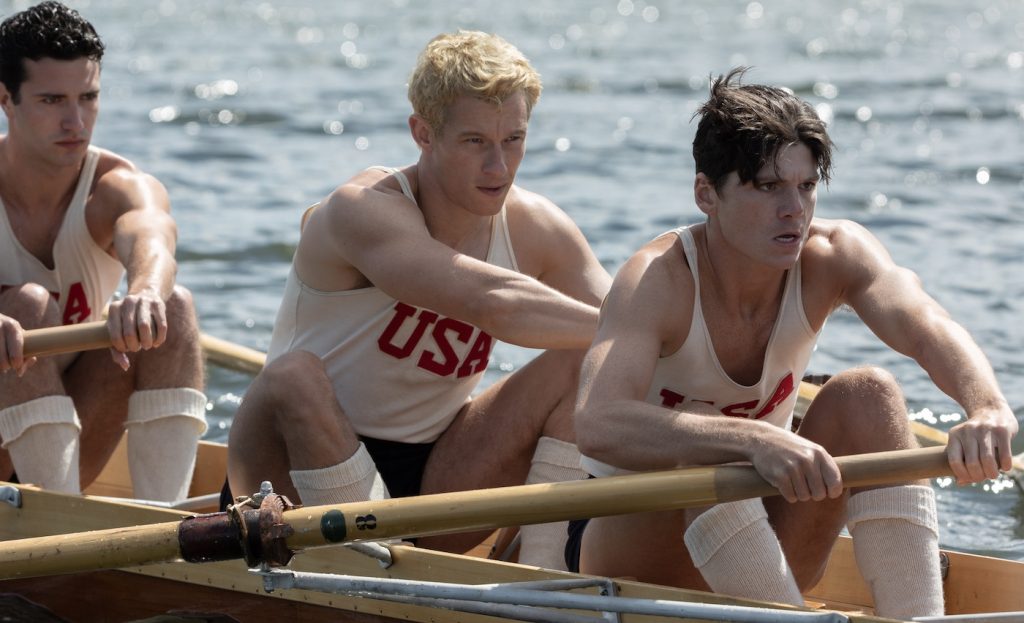
It’s difficult to understand the contribution of production design because if you do it really well, people are not aware of it. But if you make a mistake, particularly in a period film like this, everybody will notice it.
Yes, I call production designers “masters of invisibility” because that is what we are. If we do our job right, you should not know that we’re there. I don’t think anyone recognizes the fact that most of what you see in The Boys in the Boat are built sets on stage or on location. The entire shell house [where the team’s boats are built] is a recreation of the real one, and it’s a gigantic building. It’s 110 feet by 88 by 36 tall. It took us three months to build from scratch. The unique thing is that even though it’s called a shell house, it originally was an airplane hangar. That immediately informed us about what kind of floor it would be, what kind of structure it would be, etcetera.
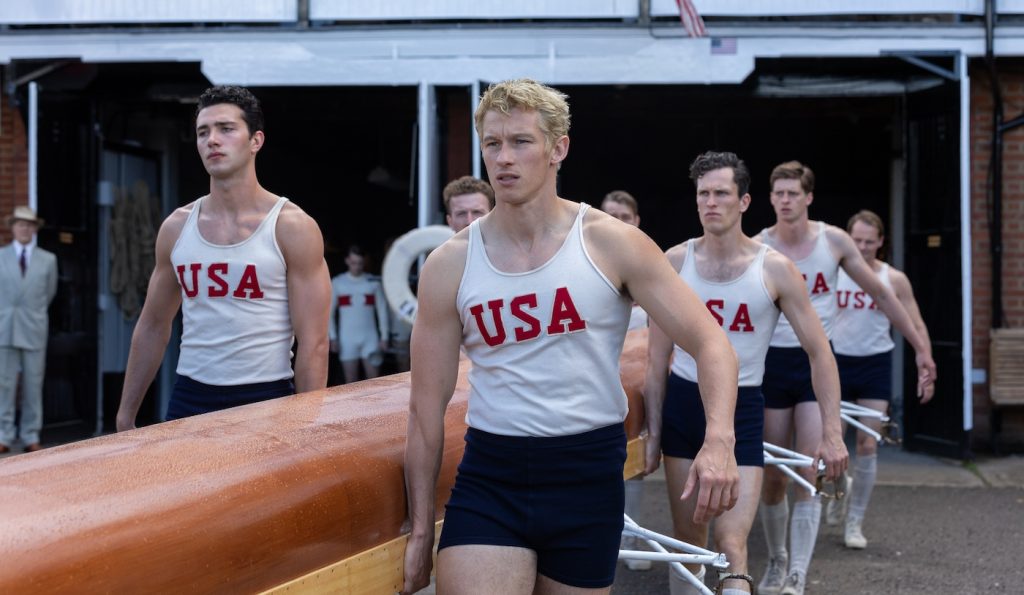
How did you go about building it?
I contacted the university, of course. And they were immensely helpful. They were very enthusiastic about the film. I couldn’t go to Seattle because of COVID, which was a really missed opportunity. So, I had to do everything from photos, and from oral history. Because they were in the process of restoring the shell house, they have more contemporary restoration drawings, which were immensely helpful. Then my next task was, okay, this building is so big; how much can I actually make it a little bit smaller but still maintain its proportions and fit the boats? And the most interesting thing is that George Pocock’s workshop was really on the mezzanine level, which is counterintuitive because he had to take them out of the window and down a floor. And a boat is 62, about 62 feet long. So clearly, I couldn’t reduce the volume too much because you have to fit a boat in there, the length of it. I was able to reduce it by about ten percent. Not to mention that we also did all the hotel rooms and all the dorm rooms. There’s so much scenery. The Seattle street is a back lot. The restaurants, the train, all of that is set. So I’m delighted that people are not guessing that. It is so beautifully transferred to the screen, and the blend between the production design and VFX is so perfect that both of us did our jobs very, very well because you don’t know where one starts and when one stops.
How did you turn England into the American Pacific Northwest?
The very first thing I wanted to teach all my London colleagues, the locations, and the art department is that American college campuses are very eclectic in their style of buildings. Where in England, it’s very much as if it was built during the Tudor era, it’s Tudor. If it’s during restoration, it’s restoration. If it’s Beaux-Arts, it’s Beaux-Arts. When you look at Seattle’s University of Washington campus, and you see, here’s the Beaux-Arts building, here’s the Tudor style building, here’s a colonial style building, they’re all very eclectic. So, for that purpose, we combined four different locations, or entities basically, to create one campus. And it worked beautifully because it gave you that scope of what an American campus has and the eclectic and less formal nature of American architecture.
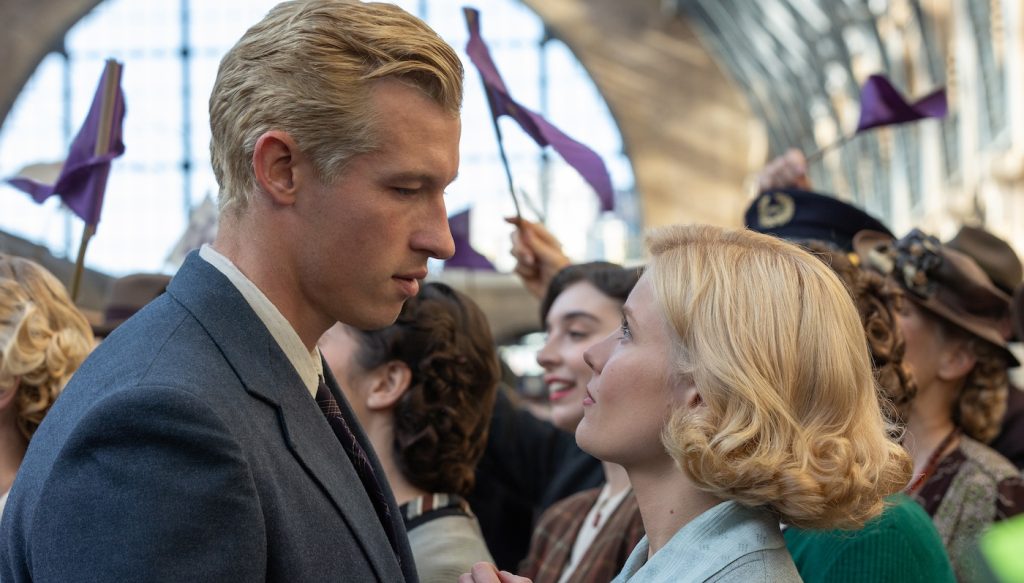
What details were really important to get right?
It was the very first image. We start with Hooverville. That was critical. In research, we learned that Seattle’s Hooverville, at one point, had 8,000 people. And it was massive. It had its own post office. We built it on what we called the back lot, actually a field. The organic nature of it is something that sometimes is harder than straight architecture. We basically looked at all the textures. We collected wallpapers, tin, and any kind of material. You have to start thinking about the characters — how would they build this, and what would they use? Joe, of course, lives in a car, so right off the bat, that was something that had to be very authentic. I did my own black-and-white sketch first to show it to George [Clooney]. And then we went to a color concept and then we put in all the buildings around, et cetera, for VFX to be able to recreate it.
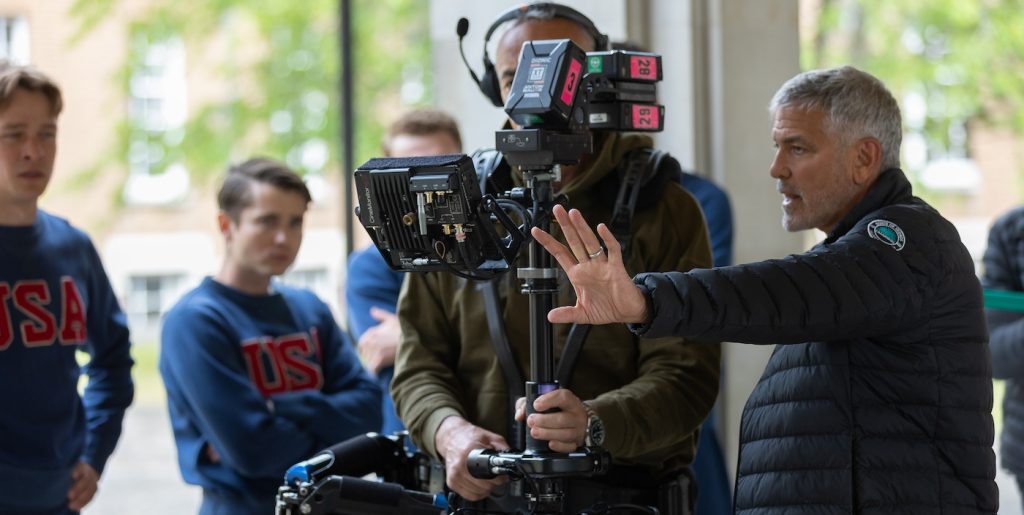
What was your first conversation with George Clooney about when you began to talk about the film?
The very first thing he stressed is authenticity. He said, “I want to be able to smell and feel the depression. It’s so important to see these boys as underdogs, as boys who had holes in their sweaters and holes in their shoes.” So, we aged everything, and we worked very hard on getting that kind of sense of dust and dirt and neglect that actually doesn’t exist in England in more pristine quarters or even contemporary life. One of the things that I think that both George and I share is that both of us approach things in a rather more subtle and simple way. We go for more simplicity rather than ornamentation. So, we looked for locations with very straight lines and very simple architecture.
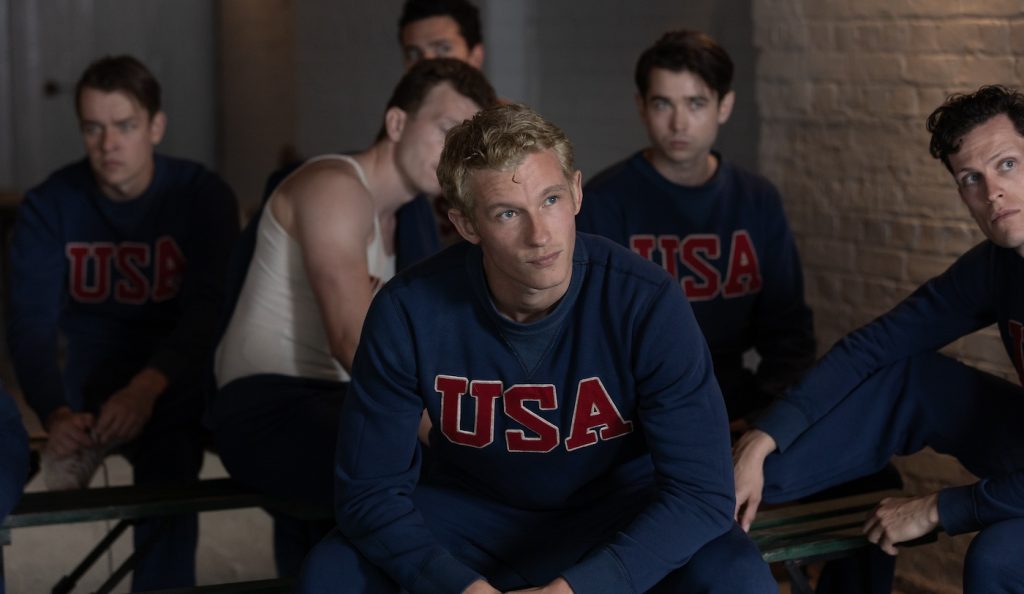
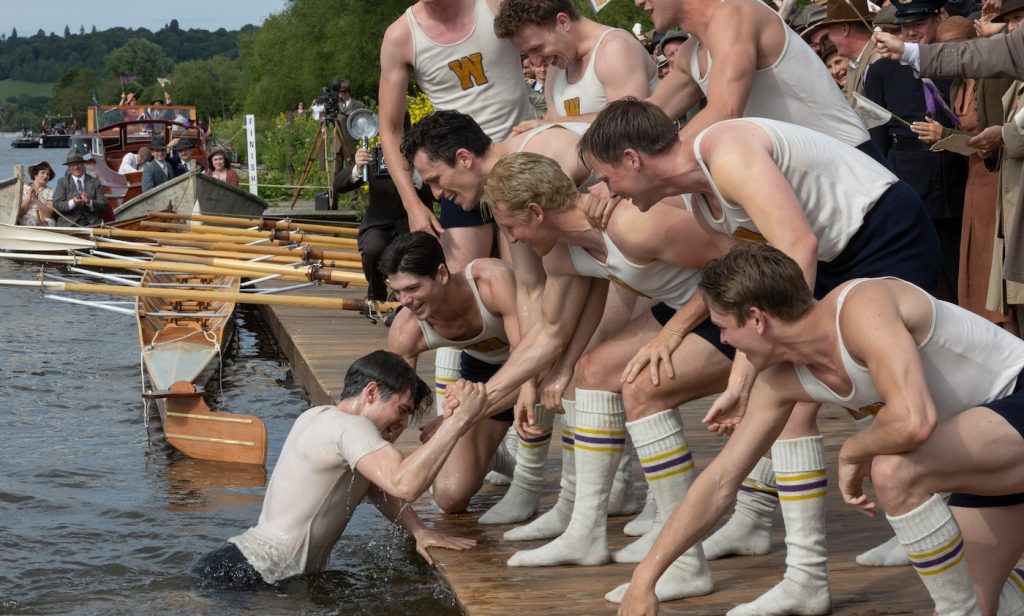
Is there one particular detail that you’re especially proud of in the film?
One particular thing that I take pride and very personal joy in was when the script called for the boys to be cleaning in the school. And the script called for a music room. And I went there and thought, “Oh boy, we’re going just to see a piano and some black curtains, and what is happening?” I just thought visually it wasn’t aspirational enough for them. It wasn’t like they wanted to be part of this university and wanted to have a better life. So, I thought, what better than to do a Shakespeare play, and what better than to do than A Midsummer Night’s Dream? A performance of that instead of a music recital. And so I pitched that idea to George and he like, “This sounds great, go for it.” When he saw the set, he was giddy. He said, “This is so beautiful.” And the next day, he came in with a 1930s edition of Shakespeare’s plays and gave it to the actor, put him on the stage, and said, “Now read from this.” And that, to me, was such a joyful moment because we both improvised and informed the characters and gave them something to do.
You’ve returned to your roots as a theater set designer.
Yes! I told George, “You can never take the theater kid out of me.”
The Boys in the Boat is in theaters now.
Featured image: (l-r.) Sam Strike stars as Roger Morris, Thomas Elms as Chuck Day, Joel Phillimore as Gordy Adam, Tom Varey as Johnny White, Wil Coban as Jim McMillin, Bruce Herbelin-Earle as Shorty Hunt, Callum Turner as Joe Rantz, Jack Mulhern as Don Hume and Luke Slattery as Bobby Moch in director George Clooney’s THE BOYS IN THE BOAT. An Amazon MGM Studios film. Photo credit: Laurie Sparham © 2023 Metro-Goldwyn-Mayer Pictures Inc. All Rights Reserved.


